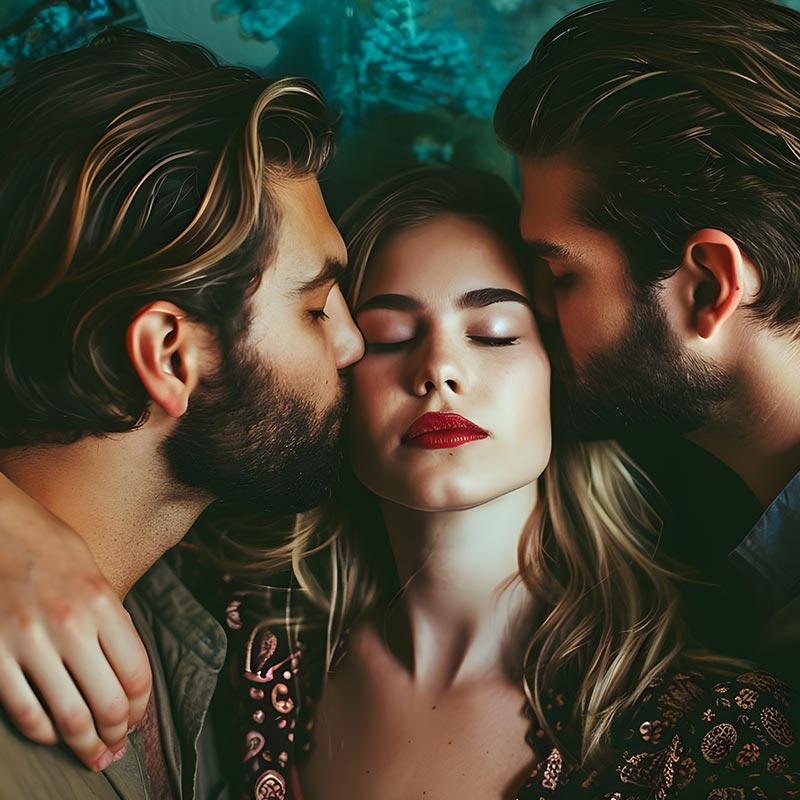Different materials can change the way different types of condoms are produced. However, most methods are very similar to how latex condoms are made.
Polyisoprene
Polyisoprene is a synthetic form of latex that has had none of the proteins that cause allergic reactions. Because it is synthetic, polyisoprene is made by chemists and does not exist out in the wild, unlike latex, which comes from rubber trees.
Once the polyisoprene is created, it is handed over to the condom factories. From there on, polyisoprene condoms, like the LifeStyles SKYN and the Durex Real Feel, are made in a nearly identical way that latex condoms are made, using the same dip method, the same testing, and the same type of packaging.
Polyurethane
Polyurethane is a thermoplastic elastomer, which is similar to rubbers, like latex, but like polyisoprene, lack the proteins which cause allergic reactions. Thermoplastic elastomer (TPR) may sound familiar– it’s actually what a number of non-porous adult toys are made of.
And while polyurethane is similar to rubber, it is more rigid. This rigidity makes it stronger than other materials, like vinyl. But in terms of condoms, as I noted in my review, this more rigidity makes them less likely to stretch, so you always need to know your size if you’re going the polyurethane route.

Trojan is notoriously difficult to contact to get any information on how their BareSkin Non-Latex Supras are made, but due to the way that polyurethane functions, we can assume that they are made using a dip method, just like latex and polyisoprene condoms.
After being dipped and tested, polyurethane condoms and loaded into a foil package, like other condoms, and doused with a special lubricant that keeps the polyurethane fresh and pliable. Because of polyurethane’s careful construction, Trojan warns against using additional lubricants with their polyurethane condoms.
Nitrile

I reached out to the Female Health Company to get the low-down on how their condoms are made and out of all the companies that produce non-latex condoms, they were the most eager to talk about their FC2, also known as the female condom or the internal condom. Turns out, like the other condoms above, they’re made very similarly to latex condoms using the dip method.
There are, however, a couple big differences:
- The main bead, which is used to make the top, outer ring, is larger because that ring needs to be larger and thicker to keep it from slipping into the orifice during sex.
- The FC2 has an inner ring, which helps it sit in the vagina better. This ring is inserted after the condom itself is made because it is not attached. This is good for if the FC2 is being used in the anus (although it is not FDA-approved for that purpose– read about why) as the inner ring should be removed for more comfort.
- The FC2 has considerably more lubricant to help get it into the orifice. This lubricant is silicone-based, which only some male condoms have.
- The FC2 is finally packaged in a plastic wrapper, instead of a foil.
Lambskin

Trojan is very secretive about the production of all of their condoms, their NaturaLamb included. We do know, however, that they have a plant in New Zealand used for condom processing. But if you’ve read my reviews, you know that those are my favorite condom. So I had to find out how they were made anyway, especially since they’re the only lambskin condom currently available in the United States and from Condom Depot.
The skin in lambskin isn’t actually skin. It’s a tube from inside the intestines of a sheep, called the cecum, which is very thin. The cecum is more of a pouch than a tube, and its job (for sheep) is to break down the plant matter that sheep eat during the digestion process.
Since it’s already a pouch, there is very little treatment that needs to go into producing lambskin condoms. I did reach out to Trojan to ask how all of their lambskin condoms wind up being the same size, but I didn’t receive an answer.

Image via Wikipedia.
It’s safe to say, however, that the cecum is cleaned and treated according to FDA-regulations. Then, the drawstring is installed before the condom is both lubricated and sealed in a foil wrapper, like other Trojan condoms.
The cecum used in condoms comes from the byproducts of sheep killed for meat, so these sheep are not slaughtered specifically for the purpose of becoming condoms. It’s not exactly the most vegan condom out there, but it is the only biodegradable one. And with ten sheep to every single person in New Zealand, it’s a pretty good guess which Trojan plant produces the NaturaLambs.
Interestingly enough, one of the award-winning ideas from the Bill and Melinda Gates’ Foundation Next Generation Condom Campaign involved making condoms from beef tendon, in a very similar way. Perhaps that will be the lambskin of the future.
